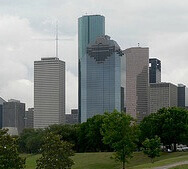TRUE GREEN: 21 WAYS TO PLANT A CITY
During the first week of November, members of the American Society of Landscape Architects and their colleagues from around the country – over 5,000 strong – met at the San Diego Convention Center. Saving the world was somewhere on the agenda.
 Could they be the group with the most influence on human habitat in the future, particularly when it comes to the connection between children and adults to the rest of nature? “Because of their training, landscape architects are big thinkers, or tend to be,” says my friend, Vicki Estrada, a landscape architect, urban designer, and president of Estrada Land Planning in San Diego.
Could they be the group with the most influence on human habitat in the future, particularly when it comes to the connection between children and adults to the rest of nature? “Because of their training, landscape architects are big thinkers, or tend to be,” says my friend, Vicki Estrada, a landscape architect, urban designer, and president of Estrada Land Planning in San Diego.
Having been asked to speak at the conference, I offered a starter list of suggestions for how landscape architects, and the rest of us, could truly green our cities:
- Apply the Nature Principle: re-concieve your city as an engine of biodiversity and human health.
- Restore nearby nature and “create” new habitat: rebuild local food webs; encourage urban wildlife.
- Recognize and increase human-nature social capital, thereby creating a healthier habitat for humans and other animals.
- Plant native species in your yard; create butterfly zones in your neighborhood; help build a Homegrown National Park*
- Create a De-central Park in every city.
- Establish new human/nature networks, including family nature clubs and green gyms.
- Connect the region with wildlife and humanlife corridors.
- Establish restorative transportation systems, including naturalized bike and pedestrian paths; quieter, more efficient public transit; shade parking areas with green roofs and/or solar panels.
- Challenge neighborhood CC&Rs and other barriers of law, regulation and rules.
- Adopt development policies favorable to green roofs, green walls, etc.
- Replace decaying shopping malls with urban ecovillages and natural park space.
- Create or retrofit homes as restorative habitats for humans and other species.
- Design and retrofit schools and libraries with biophilic design; green every schoolyard.
- Apply biophilic design to new housing and commercial developments.
- Weave nature into communities for older people, including assisted living homes.
- Create restorative workplaces that produce human energy.
- Encourage urban and suburban agriculture, from community gardens to vertical farms.
- Recognize and celebrate your urban bioregion’s natural identity.
- Establish a regional scorecard that includes the economic benefits of truly greening your city.
- Support a regional children and nature campaign; help build the New Nature Movement
- Focus your city’s future envisioning process through the prism of nature: consider how planting the restorative city could reshape healthcare, education, law enforcement, redevelopment, tourism and other businesses.
*The term comes from Douglas W. Tallamy, author of “Bringing Nature Home.”
-
Network News
POLICY UPDATE: Policy and advocacy for the children and nature movement
-
Voices
Binoculars, bald eagles and my journey as a Black birder
-
Richard Louv
THE WONDER BOWL: Ten Spring and Summer Nature Activities for Kids and Adults
-
Network News
Minneapolis Spotlight: The promise and possibilities of parks for youth
-
Voices
Why nature is my motherhood ally







Commentaries on the C&NN website are offered to share diverse points-of-view from the global children and nature movement and to encourage new thinking and debate. The views and opinions expressed are those of the author(s) and do not necessarily reflect the position of C&NN. C&NN does not officially endorse every statement, report or product mentioned.